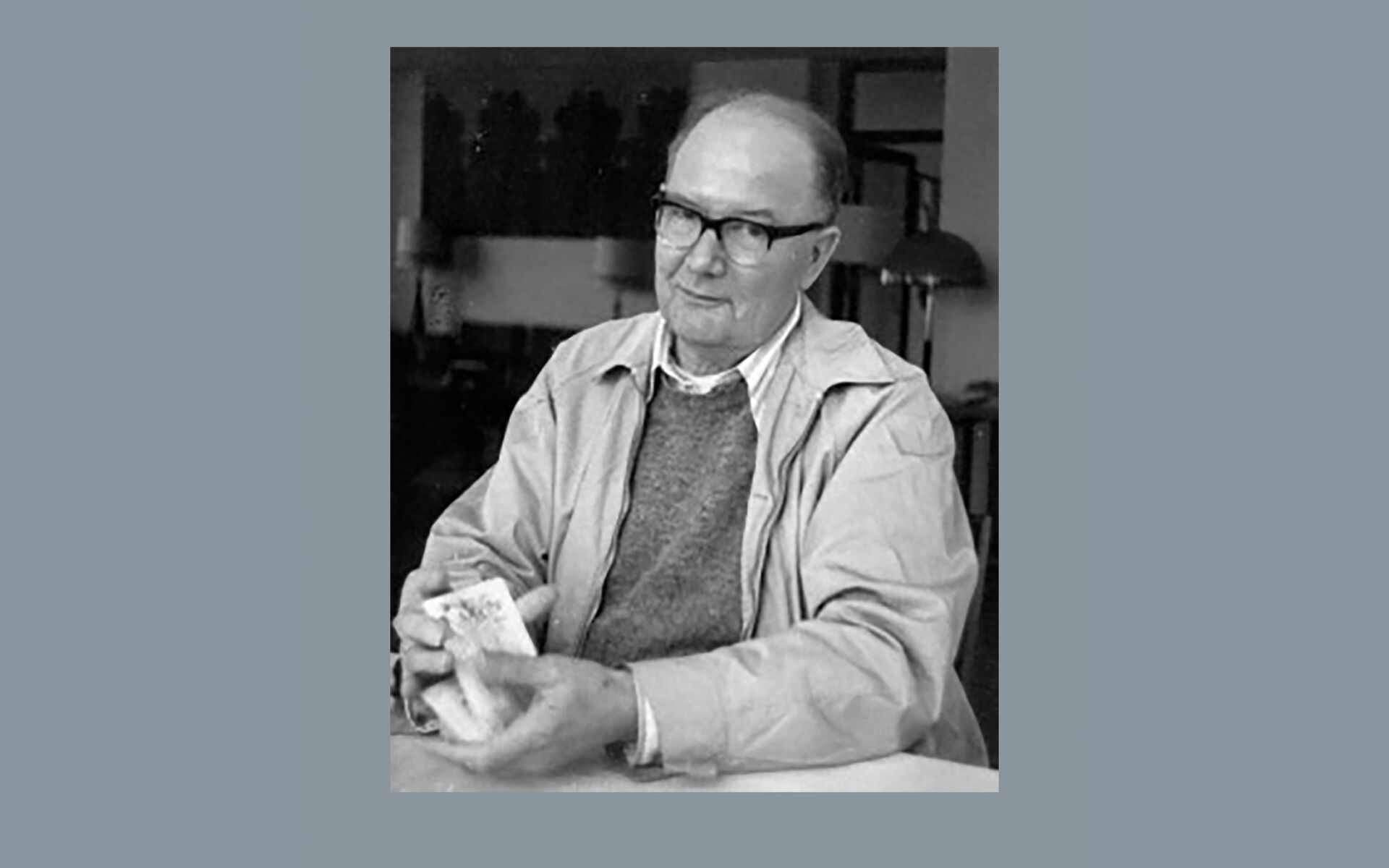The Inner Dimensions of Faith as a Ground of Interreligious Dialogue

In This Article
-
No animosity can make serious inroads in the minds of those who can contemplate the Real in this vein. Even if someone does not accept the Real as such, this “someone” remains His mirror, epiphany, and masterpiece, which means that he or she is to be ontologically appreciated, not violated against.
-
The importance of the mystical love of God as the inner telos behind all events is the common point in which the dialectics of Nursi's and Lonergan's difference might be resolved.
As the famous Sufi poet Jalal al-Din al-Rumi (d. 1273) once said, “Listen with ears of tolerance, see through eyes of compassion, speak with the language of love” [1]. It was Rumi’s mystical falling in love with God that animated his affective poetry. For many a modern-day observer, however, the connotations of such words as “religion” and “God” would seem divisive and sectarian beyond any hope. There are, however, two prominent theologians of our time who demonstrate that religion and inclusivism are not mutually exclusive: the Canadian philosopher and Catholic theologian Bernard Lonergan (1904-1984) and the Turkish Islamic intellectual Bediuzzaman Said Nursi (1873-1960). The two have wielded, and still do, considerable influence upon their respective religious milieus, presenting original and yet faithful interpretations of their respective traditions that are sensitive to the intellectual and spiritual exigencies of modernity. The two showed that their interpretations of religious experience are conducive to peacemaking and interreligious dialogue.
During his lifetime, Nursi several times reached out to Christian leaders, the most important instances being sending his works to Pope Pius XII in 1950 and visiting the Ecumenical Patriarch Athenagoras in Istanbul in 1953 [2]. Further, despite constant state persecution and arbitrary imprisonments, Nursi’s whole life exemplified his innovative and yet deeply Islamic notion of a “spiritual” or “educational” jihad (jihad-i manawi), one that never resorts to violence and opposes not physical, but “spiritual” enemies: ignorance, poverty, and division. Fr. Thomas Michel, who worked in the Vatican as a Head of the Office for relations with Muslims from 1981 to 1994, states, “Along with Gandhi and Martin Luther King, Said Nursi must be seen as one of the Twentieth Century’s great exponents of non-violent resistance” [3].
Lonergan, in turn, is an important Neo-Thomist thinker who was once presented on the cover of Time magazine as “one of the finest philosophic thinkers of the twentieth Century” [4]. He worked out a transcendental theory of intentional interiority that allows him to argue that dialogue is a must not only between empirical science and theology but also between different religions and diverse worldviews. This article will demonstrate how the two thinkers base their idea of interreligious dialogue on their interpretations of the inward dimension of their religious traditions as an “infatuation with beauty” and a “falling in love,” as well as analysing how their interpretations can foster interfaith dialogue.
Nursi’s philosophy of interreligious dialogue
The value that Nursi places on accepting and understanding the culturally “Other” can be better portrayed if we attend to his epistemology. Nursi incessantly underscores that all his treatises (generically called the Risale-i Nur [Epistles of Light]) are inspired by the Qur’an: he almost always cites a verse of the Qur’an at the beginning of key passages and provides, through what follows, an exegesis of the verse [5]. His interpretation of the Qur’an, in turn, insistently reverts his reader’s attention to the observed data of the sensible world in order to reveal how the created entities point beyond themselves to the divine “Wholly Other” – so much so that, for Nursi, the entire universe might be seen as a materialized form of the Qur’an [6]. This radiant inward dimension of being is called Malakutiyyah (“Intellective Realm”), whereas the outward dimension of the physical world, Mulkiyyah (“Material Realm”). Malakutiyyah discloses itself to anyone who personally reflects and deliberates (tafakkar) on the design of the world after the model provided by Nursi’s exegesis and with the intention of “finding” God in everything. Nursi allegorically assimilates this “Intellective Realm” to the transparent frontside of the mirror. Even if very different forms – some apparently ugly and some apparently beautiful – “intrude” on the Mulkiyyah side of the “mirror,” its “Intellective” aspect always remains transparent and beautiful, as it looks to the Creator of all beings [7]. On the Malakutiyyah level, all individual entities of the world – humanity first and foremost – constantly and ubiquitously partake of divine holiness thanks to their being loci of Allah’s reflected “Superb Names” (al-Asma’ al-Husna) mentioned in the Qur’an. Even if God’s essence (Zhatullah) is ineffable, the divine names’ observable activity in the world displays divine artistry for anyone willing to intend God through his or her reflective thought. Such a thought will show that, for instance, philosophy is based on the Superb Name Hakim (All-Wise), medicine on the Name Shafi (Healer), and geometry on the Name Muqaddir (Determiner), and so on. The same goes for human perfections and all levels of human virtues – they are founded on the Superb Names [8].
It is this inward “Qur’anic” outlook that allows Nursi to perceive everything in the world as intelligible and dialogic in the sense that all created entities – different as they might be in appearance – are essentially beautiful divine “mirrors” telling something about God and requiring that their observers appreciate them: “Beauty and fairness desire to see and be seen. Both require the existence of yearning witnesses and bewildered admirers” [9]. This yearning and this admiration show all things as inwardly lovable and allows Nursi to say, “Love is the cause of the universe’s existence and is what binds it; and it is both the light of the universe and its life. Since man is the most comprehensive fruit of the universe, a love that will conquer the universe has been included in his heart, the seed of that fruit” [10].
Of course, Nursi’s constant focus on his “Qur’anic lenses” might invoke – in some people’s minds – a sense of absolutism and inability to learn from the culturally Other. To ward off such a possibility, Nursi bases his idea of beings as “mirrors of God” on two aspects. First, in the same way as the darkness serves as a foil for the beauty of light to manifest, the impotence of human beings – their weaknesses, shortcomings, and mistakes – serve as a foil for the power of the All-Powerful, All-Subsistent and Perfect One to manifest His Names all the more intensively. So, Nursi warns that the believer is to use the reflective thought to see how the Superb Names self-manifest through things and through his or her own being, not in things or in his or her being, lest he or she come to deify or absolutize his or her personality, culture, or nationality [11]. Secondly, human beings are only mirrors to the Names, not the authentic possessors thereof [12]. (That is to say, humans, thanks to their self-awareness and if they are not self-conceited, are able to compare their activity/attributes with those of the Transcendent and come to appreciate the latter’s awe-inspiring beauty, i.e. come to know God. Someone who has built a physical house and self-identifies as a “builder,” for instance, can profoundly admire the One who has built the magnificent Universe.) Our “mirror-like” nature, however, manifests the Superb Names only in an incomplete manner; for Nursi, we “possess” them in a metaphorical, partial, and temporary manner. This, in turn, means that our “mirror-like” natures are inherently open to learn from the manifestations of the Superb Names within other cultures and religions.
This being the case, for Nursi, no animosity can make serious inroads in the minds of those who can contemplate the Real in this vein. Even if someone does not accept the Real as such, this “someone” remains His mirror, epiphany, and masterpiece, which means that he or she is to be ontologically appreciated, not violated against. However, in Nursi’s view, one is able to realize this sense of appreciation of the world only if one purifies one’s sense of self – which he calls “I-ness” (anā) – from any egocentrism. If anā looks at one’s selfhood with an attitude that is self-indicative rather than God-indicative, the entirety of the reflections of the Names come to be attributed to the human person’s ego, thereby giving rise to spiritual ignorance and intolerance [13].
Lonergan’s philosophy of interreligious dialogue
The very heart of Lonergan’s take on interreligious dialogue rests in what he calls “GEM” (“Generalized Empirical Method”): it provides a basis not only for any interdisciplinary cooperation, but for interreligious dialogue as well. It presupposes that, at least theoretically, the disinterested desire to know and wonder – which is pertinent to all humans as long as they are humans and not only scientists, historians of religion, or theologians – drives all humans to be attentive to data, intelligent in understanding, reasonable in judgments, and responsible in decisions [14]. Lonergan’s system proposes that the very structure of the interlocutors’ intentional consciousness leads them to seek what is authentic and true in the ways of the religious Other and to anticipate the possibility of “integrated understanding” between various religious traditions. Further, the interlocutors should see any differences, obvious as they are at first glance, as “genetic,” i.e., reconcilable, rather than “dialectic,” i.e., irreconcilable. Any point-blank refusal of the interlocutors to see the existence of at least some important similarities with the Other, signals, for Lonergan, an unauthenticity of their own thinking due to its affliction with one or several biases [15]. That is, the powerful drive of the interlocutors’ disinterested desire to wonder in an unrestricted manner might be frustrated by one or several of the following four biases. The first one is dramatic bias, that is, the existence of psychic aberrations or underdevelopment within the interlocutors caused by their “psychic wounds.” The second one is egoistic bias, i.e., one’s self-centeredness that refuses to allow for even a minimal degree of self-abnegation necessary to consider the common good. The third one is collective bias that “favors what is best for the group at the expense of others outside the group.” The fourth one is general bias that disregards questions that do not seem to be of immediate practical importance [16].
Further, Lonergan asserts that, if one self-transcends by remaining not only attentive, not only intelligent, not only reasonable, but also responsible (he calls these levels of intentionality as the “four transcendentals”), one comes to be well-positioned to reach the fullness of one’s ontological, axiological, and epistemological horizons by mystically falling “in love with God” in an immediate and unrestricted manner [17]. This love operates within the parameters of one’s intentional interiority, and yet it comes as a free gift of God’s grace that brings about the most genuine state of one’s relation to God, namely a “dynamic state of being in love in an unrestricted manner” [18]. This unmediated experience of God’s love is transcultural as far as its inner nature goes; from the standpoint of different cultural contexts and historical periods, it is mediated differently through different religious and cultural expressions, practices, and traditions [19]. Lonergan calls this experience as the “infrastructure” or “inner word” which ensues upon the Holy Spirit “flooding one’s heart,” and it becomes a hermeneutical toolkit for one’s authentic response to the challenges of interreligious dialogue [20].
Even if this mystical state of “being-in-love” is transcultural, for Lonergan, the Christian claim that religion is being in love with God in an unrestricted manner, renders Christianity unique. Lonergan insists that the “outer word” of the Christian tradition is more than just a religious experience objectified: it was given as revelation, coming from Jesus Christ [21]. That is, for Lonergan, “infrastructure” that informs the very spirit of religious faith, presupposes its mediation and objectification vis-à-vis the world through the “superstructure” of language and beliefs, meanings and values, scripture and sacraments, and community and culture. For him, however, Christian doctrine is this “superstructure” par excellence, and its unique appropriateness cannot be transcended by any universal mystical experience [22]. In other words, for Lonergan, the authoritativeness and structure of this outer word is such that it can be conceived as the most direct mediation of immediacy and becomes, if properly appropriated, “second immediacy” [23].
Differences-in-Similarities
As follows from the abovementioned, the positions of the two thinkers can be broadly identified as “inclusivism.” While they acknowledge that God’s salvific activity can unfold everywhere in the world in an overt or covert manner, they make it clear that, wherever it unfolds, it does so as either the ubiquitous operation of the Qur’anic “Superb Names” (Nursi) or the Christian notion of “love of God flooding our hearts” (Lonergan). Both seem to have realized that most people are never totally detached from their tradition and that any God-talk is bound to be “confessional” – but not necessarily “confessionalist.” Naturally, one starts interreligious dialogue based on the minimal “non-negotiable,” premises of one’s religion.
At first glance, Lonergan’s clear distinction between the “inner word” as pertaining to the “unmediated experience of the mystery of love” and the “outer word” as this love’s mediated expression, allows him to see a somewhat deeper unity behind the differences. For him, the gift of God’s love justifies dialogue with “all Christians, with non-Christians, and even with atheists who may love God in their hearts while not knowing him with their heads” [24]. For Nursi, in contrast, aggressive atheism is evil to be wrestled with by the “Qur’anic sword of persuasion”; it is irreconcilable with genuine civilization. Indeed, he sees an atheistic civilization a contradiction in terms, for genuine civilization is possible only if humans recognize the transcendent meaning of their lives and thus gain in virtue [25].
Yet, the importance of the mystical love of God as the inner telos behind all events is the common point in which the dialectics of their difference might be resolved. Nursi’s overall accent on one’s affective appreciation of the beauty of the world as reflective of the divine beauty, allows one to contextualize his apparently incoherent lack of charity toward atheistically minded people. It might hark back to such facts as his identification of the penetration of atheistic assertions and materialistic ideologies as the root problem facing the Muslim world at the start of the 20th century or his lack of travel to Europe at the time of peace (he spent 2 years in Russia but only as a prisoner-of-war) [26]. The inner structure of Nursi’s theology makes it incumbent upon his followers – under normal social and political conditions – to pursue meaningful dialogue even with non-religious or atheistic people. Another possibility to reconcile Nursi’s position with that of Lonergan’s is to address the meaning of the word “atheism.” If it denotes, as John Paul II said, “not knowing the true nature of created reality but absolutizing it, and therefore ‘idolizing’ it,” [27] then Lonergan’s discourse on biases would rather concur with Nursi’s strictures on atheism.
Conclusion
As Ian Markham, a Nursi scholar and Episcopal priest says, in order for any interfaith encounter to be meaningful, one has to know, understand, and love one’s own tradition, for one will “find it easy to recognize in others the same depth of commitment and affection” [28]. Indeed, two music enthusiasts (say, one involved in jazz, the other in choral) “can relate much more effectively to each other than with the musical amateur who cannot read music” [29]. One’s discovery of the common “inner dimensions” within different faith-traditions, is greatly facilitated when one first fathoms the profundity of one’s own one. Nursi and Lonergan are deeply in love with their traditions and yet contemplate, through the inner mystical dimensions of their traditions, the beauty of other ways. Even if the “inner dimensions” of the two religions are remarkably transparent and transcultural, there should be some place that can determine the legitimacy (or lack thereof) of insights emerging from one’s encounter with the Other. There is an inward spirit behind any outward form; in order to penetrate to the spirit, however, one first needs the form. One can argue that it is this aspect of both thinkers’ ideas that makes them so appealing to their respective religious milieus today. If Ian Markham says that Nursi’s “Qur’anic” approach could, in principle, be “affirmed by any traditional Muslim,”[30] arguably the same statement can be made about Lonergan, too: his “inner word” can be seen as nothing but a harmonious development of the current position of Catholic church regarding the “seeds of the Word” present and active in different religions.
References
- Mahmoud Masaeli and Rico Sneller, “Introduction,” in Responses of Mysticism to Religious Terrorism: Sufism and Beyond, ed. Mahmoud Masaeli & Rico Sneller (Oud-Turnhout: Gompel&Svacina, 2020), 8.
- Thomas Michel, “Muslim-Christian Dialogue and Cooperation in the Thought of Bediuzzaman Said Nursi,” in Said Nursi’s Views on Muslim-Christian Understanding, ed. Shukran Vahide (Istanbul: Soz Basim Yayin, 2005), 36.
- Thomas Michel, “Dialogue of Ideas between the Thought of Pope John Paul II and the Risale-I Nur,” in Globalization, Ethics, and Islam, ed. Ian Markham and Ibrahim Ozdemir, (London and New York: Routledge, 2005), 44.
- Gerard Whelan, “The Continuing Significance of Bernard Lonergan,” Thinking Faith, https://www.thinkingfaith.org/articles/20080923_1.htm (accessed August 24, 2021).
- Ian Markham, An Introduction to Said Nursi: Life, Thought and Writings (Farnham, Surrey: Ashgate, 2011), 18.
- Bediuzzaman Said Nursi, Sualar [Rays], (Istanbul: Soz Basim Yayin, 2003), 200.
- Said Nursi, Signs of Miraculousness (Istanbul: Sozler Publications, 2004), 72, in Colin Turner, The Qur’an Revealed: A Critical Analysis of Said Nursi’s Epistles of Light (Berlin: GerlachPress, 2013), 91.
- Bediuzzaman Said Nursi, The Words: On the Nature and Purposes of Man, Life, and All Things, trans. Sukran Vahide (Istanbul: Sozler Publications, 2008), 655.
- Nursi, Words, 80.
- Nursi, Words, 367.
- Farid al-Ansari, Miftāḥ al-Nūr fī Mafāhīm Rasā’il al-Nūr (Miknas: Jami‘at al-Sulṭān al-Mawlā Ismā‘īl, Kindle Edition), 117-118.
- Al-Ansari, Miftāḥ, 115.
- Bediuzzaman Said Nursi, Al-Mathnawi Al-Nuri: Seedbed of the Light, trans. Huseyin Akarsu (New Jercey: Light, 2007), 376.
- Bernard Lonergan, Method in Theology, ed. Robert M. Doran and John D. Dadosky (Toronto: University of Toronto Press, 2017), 101-2.
- John Dadosky, The Structure of Religious Knowing: Encountering the Sacred in Eliade and Lonergan (New York: State University of New York Press, 2004), 35, 38.
- Bernard Lonergan, Insight: A Study of Human Understanding (Toronto: University of Toronto Press, 1992, 214-5, 242-253.
- Lonergan, 2017, 105.
- Dadosky, 2004, 30.
- Joseph Flanagan, “Lonergan’s New Context for Theology,” Revista Portuguesa de Filosofia 63, (2007), 211 (193-215).
- Dadosky, 2004, 32.
- Ibid.
- William Johnston, The Inner Eye of Love (New York: Harper and Row Publishers, Inc., 1978), 65, in Nancy C. Ring, Doctrine within the Dialectic of Subjectivity and Objectivity: A Critical Study of the Positions of Paul Tillich and Bernard Lonergan, (San Francisco: Mellen Research University Press, 1991), 145-6. Dadosky, 144.
- Ring, 1991, 147.
- Lonergan, 2017, 261.
- Markham, “Secular or Religious Foundations,” in Globalization, Ethics, and Islam, ed. Ian Markham and Ibrahim Ozdemir, (London and New York: Routledge, 2005), 72.
- Patrice C. Brodeur, “The Ethics of Dediuzzaman Said Nursi’s Dialogue with the West in Light of His Concept of ‘Europe,’” in Globalization, Ethics, and Islam, 89.
- John Paul II, “General Audience,” Vatican.Va, Wednesday 14 April 1999, accessed Dec. 9, 2021, https://www.vatican.va/content/john-paul-ii/en/audiences/1999/documents/hf_jp-ii_aud_14041999.html
- Markham, Ian. Engaging with Bediuzzaman Said Nursi. New York: Routledge, 2016. p. 138.
- Ibid.
- Ibid. p. 63.









